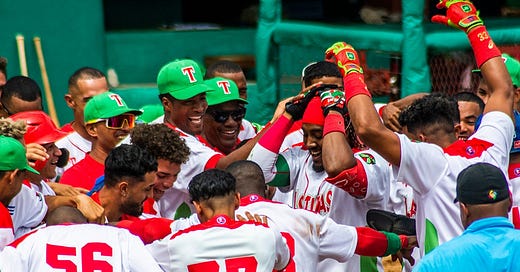Rewind of the week: Pinar del Río continues to dominate the league; Las Tunas at an elite pace; 3 key takeaways and more
After going through the first half of the season, this 63rd National Series of Cuban baseball is about to enter the final stretch.
So far, 55% of the games have been played. If you've followed this campaign at any point, I don't think it's necessary to remind you of the huge drop in league standards. Either way, I know many of you are following your favo…



